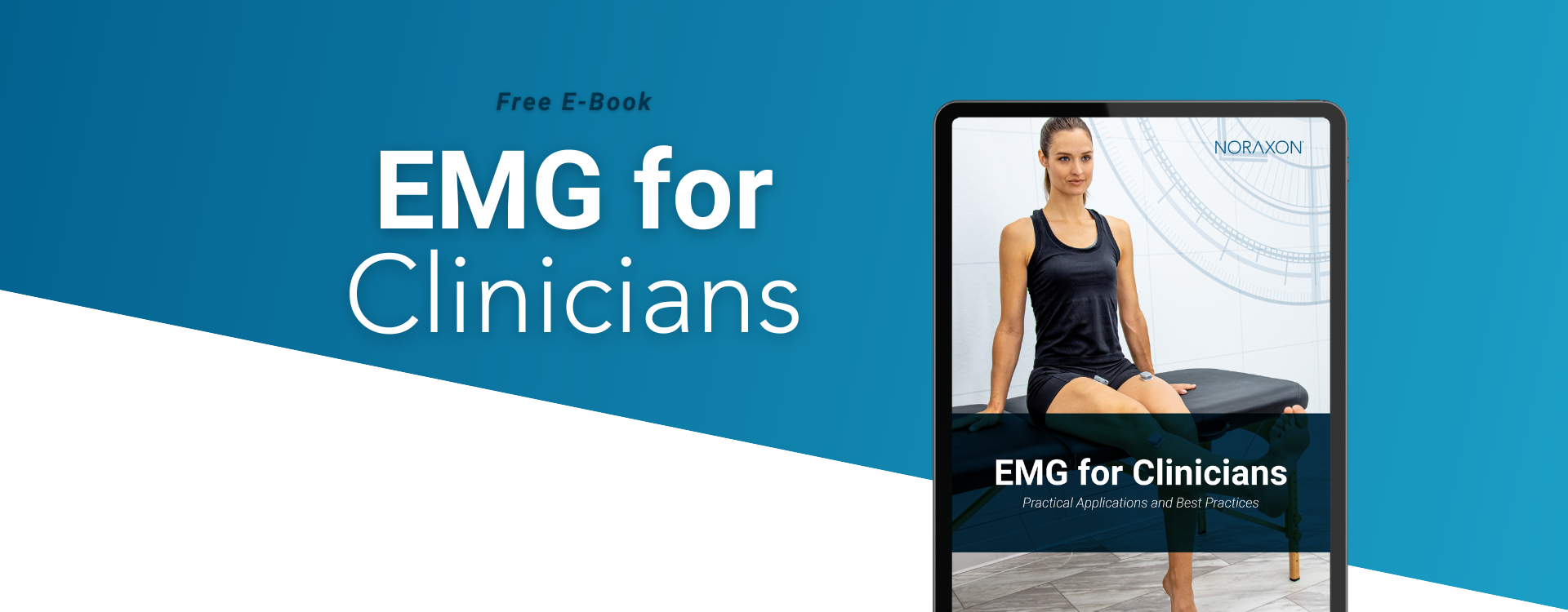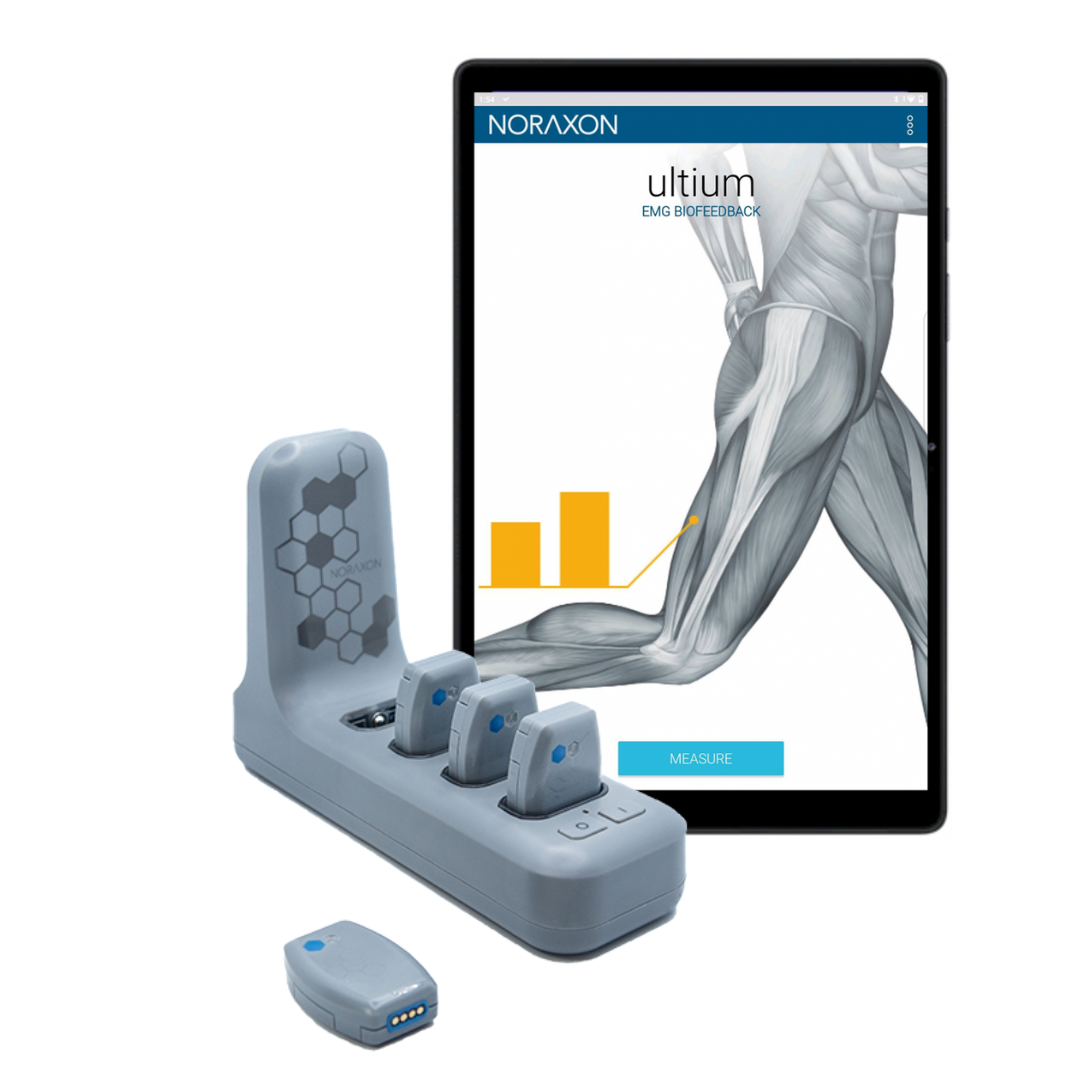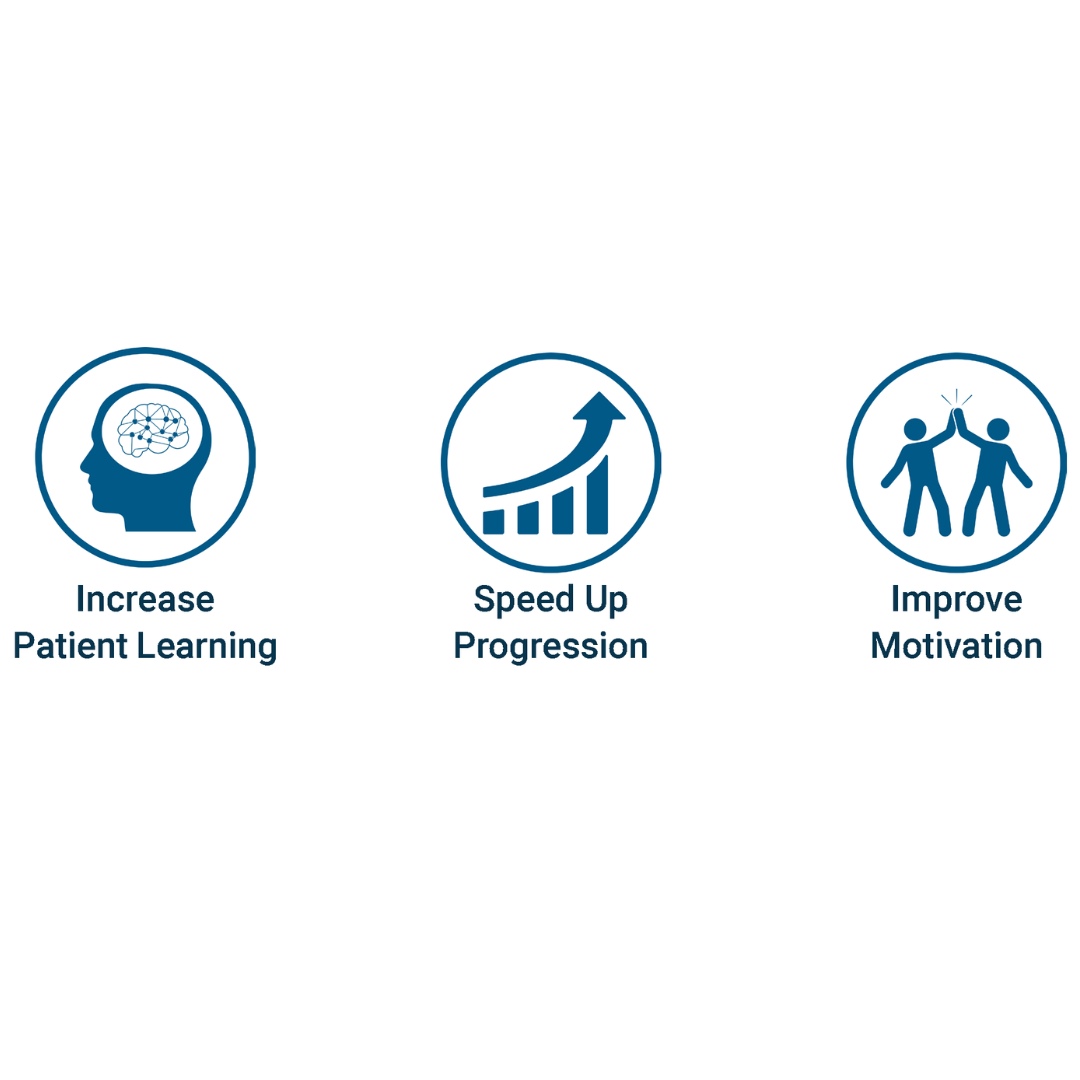

Benefits of EMG in
a Clinical Setting
EMG is a powerful tool for clinicians aiming to optimize recovery and manage pain more effectively. By capturing real-time muscle activation data, EMG helps identify overactivity, compensation patterns, and improper coordination (issues often missed in standard assessments). This allows for personalized treatment plans, targeted pain relief strategies, and comprehensive movement analysis. With biofeedback, patients can visualize their progress, improve muscle control, and reinforce proper movement patterns, making EMG a key asset in supporting long-term recovery and improving quality of life.

Get to Know the Basics of Surface EMG
Curious how surface EMG (sEMG) actually works? This section of the guide breaks down the fundamentals: what sEMG measures, how to place electrodes correctly, and why factors like skin impedance and muscle depth matter. With a clear visual and practical recording tips, it’s a helpful starting point for clinicians who want to understand what EMG data really tells them about muscle activity and movement control.
Surface EMG is a powerful tool that enhances clinical insights, making it easier to track muscle activation, guide rehabilitation, and support biofeedback. From understanding foundational concepts to practical applications, sEMG offers clinicians a non-invasive, objective approach to improving patient care. By integrating sEMG into your practice, you’re taking an important step toward more personalized and effective treatment.

Make EMG Data
Actionable in the Clinic
Wondering how to actually use sEMG insights without getting overwhelmed by technical details? This section of the guide breaks down how to interpret EMG patterns like timing, amplitude, and symmetry; plus how biofeedback helps patients visualize their progress in real time. Whether you’re looking to spot muscle imbalances or keep patients motivated during rehab, these practical tips will help you turn EMG data into real clinical value.

